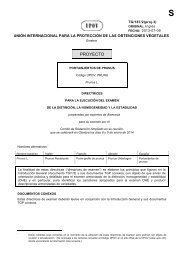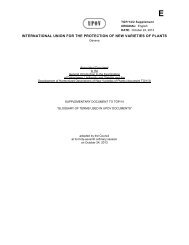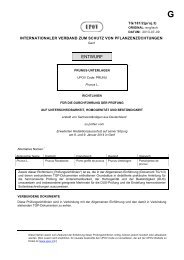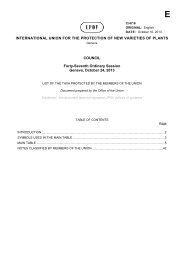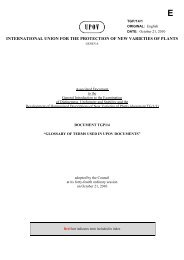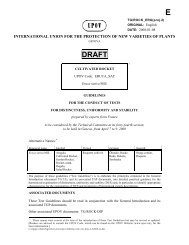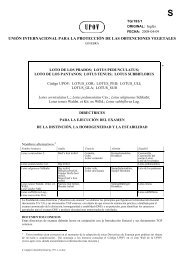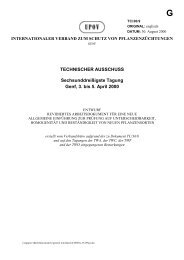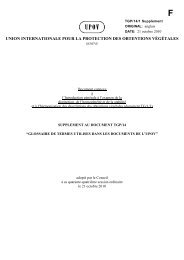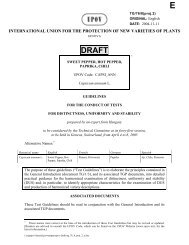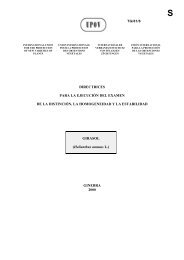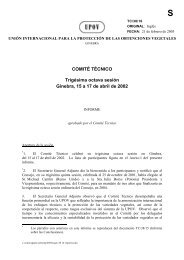(Pleurotus ostreatus (Jacq.) P. Kumm.) - International Union for the ...
(Pleurotus ostreatus (Jacq.) P. Kumm.) - International Union for the ...
(Pleurotus ostreatus (Jacq.) P. Kumm.) - International Union for the ...
Create successful ePaper yourself
Turn your PDF publications into a flip-book with our unique Google optimized e-Paper software.
TG/PLEUR(proj.5)<br />
Oyster Mushroom, 2013-02-11<br />
- 6 -<br />
6.2 States of Expression and Corresponding Notes<br />
6.2.1 States of expression are given <strong>for</strong> each characteristic to define <strong>the</strong> characteristic and to harmonize<br />
descriptions. Each state of expression is allocated a corresponding numerical note <strong>for</strong> ease of recording of<br />
data and <strong>for</strong> <strong>the</strong> production and exchange of <strong>the</strong> description.<br />
6.2.2 In <strong>the</strong> case of qualitative and pseudo-qualitative characteristics (see Chapter 6.3), all relevant states<br />
of expression are presented in <strong>the</strong> characteristic. However, in <strong>the</strong> case of quantitative characteristics with 5<br />
or more states, an abbreviated scale may be used to minimize <strong>the</strong> size of <strong>the</strong> Table of Characteristics. For<br />
example, in <strong>the</strong> case of a quantitative characteristic with 9 states, <strong>the</strong> presentation of states of expression in<br />
<strong>the</strong> Test Guidelines may be abbreviated as follows:<br />
State<br />
Note<br />
small 3<br />
medium 5<br />
large 7<br />
However, it should be noted that all of <strong>the</strong> following 9 states of expression exist to describe varieties and<br />
should be used as appropriate:<br />
State<br />
Note<br />
very small 1<br />
very small to small 2<br />
small 3<br />
small to medium 4<br />
medium 5<br />
medium to large 6<br />
large 7<br />
large to very large 8<br />
very large 9<br />
6.2.3 Fur<strong>the</strong>r explanation of <strong>the</strong> presentation of states of expression and notes is provided in document<br />
TGP/7 “Development of Test Guidelines”.<br />
6.3 Types of Expression<br />
An explanation of <strong>the</strong> types of expression of characteristics (qualitative, quantitative and<br />
pseudo-qualitative) is provided in <strong>the</strong> General Introduction.<br />
6.4 Example Varieties<br />
Where appropriate, example varieties are provided to clarify <strong>the</strong> states of expression of each<br />
characteristic.<br />
Key <strong>for</strong> species of <strong>Pleurotus</strong><br />
Species<br />
Key in <strong>the</strong> Table of Characteristics<br />
P. <strong>ostreatus</strong> o<br />
P. eryngii e<br />
P. pulmonarius p



